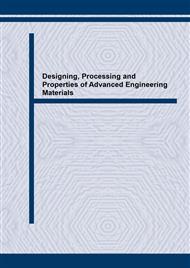p.813
p.817
p.821
p.825
p.829
p.833
p.837
p.841
p.845
High Temperature Deformation Behavior of a Ti-45.5Al-2Cr-4Nb-0.4B Intermetallic Compound
Abstract:
High temperature deformation behavior of a Ti-Al intermetallic compound has been investigated in this study. Specimens with a near gamma and a lamella structure were obtained by performing heat treatment at temperatures from 1200 to 1330°C for 24 hr, respectively, and stabilized at 900°C for 4 hr followed by air cooling. A series of load relaxation tests has been conducted on these samples at temperatures ranging from 850 to 950°C to construct flow curves in the strain rate range from 10-6/s to 10-3/s. Strain hardening was observed even at the temperature of 950°C in both the near gamma and the lamella structures. Further aging treatment for 12 hr at the test temperatures has been found to cause negligible softening in both microstructures, providing the strong applicability of this alloy system in the temperature range.
Info:
Periodical:
Pages:
829-832
Citation:
Online since:
March 2004
Authors:
Keywords:
Price:
Сopyright:
© 2004 Trans Tech Publications Ltd. All Rights Reserved
Share:
Citation:


